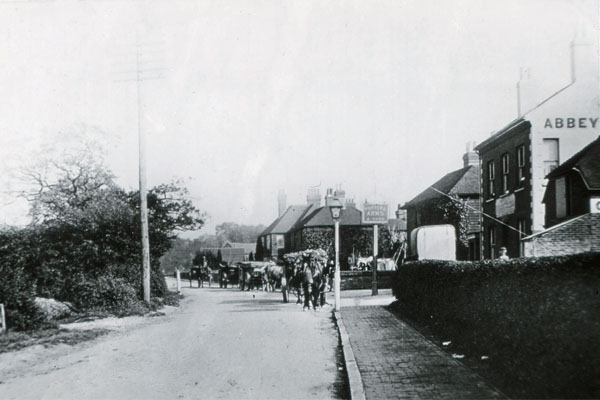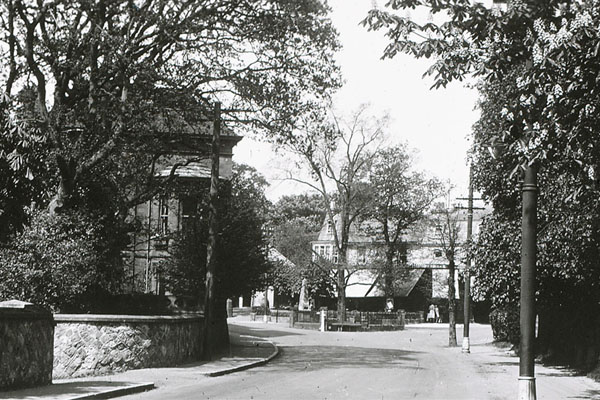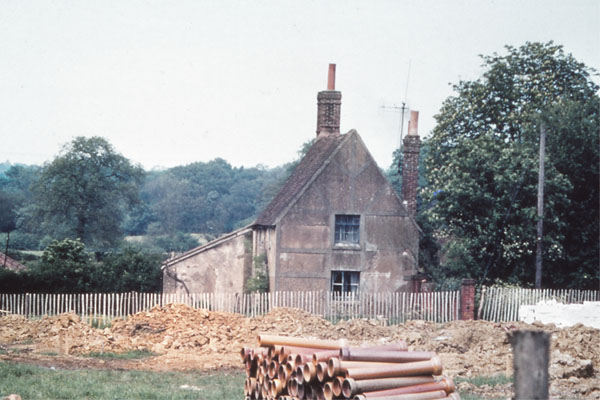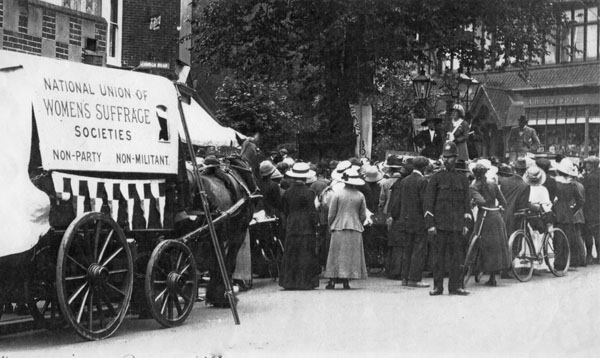Burgess Hill Heritage & History Association
From our foundation in 1979 we were The Burgess Hill Local History Society. We still are a local history society and at our meetings we still enjoy talks on a variety of local history topics, usually relating to our local area of Sussex. Our main enthusiasm and raison d’etre is directed towards finding out what we can about the history of our town and to helping others to do so. We created a ‘motto’ for our new banner: to know our history is to safeguard our heritage. We are now trying to ensure that we spread the word on our history in order to protect our heritage.
For more about the banner, our meetings and the various things we do in the Town, go to our Activities and Talks & Events pages.
We wanted to start a conversation about the word ‘heritage’ as relevant to Burgess Hill. It is frequently accused of not having any heritage, or of being a ‘New Town’! This is far from the case. Despite seeming to be just another growing modern town, it does have a Victorian core, as well as a few old timber-framed farm houses left. There are many buildings of historical significance or architectural merit still standing, and they need to be recognised and preserved. As an earlier community, in the form of interconnected farms and cottages in and around the old ‘St John’s Common’, which spread from the recently closed Barclays Bank in the Town Centre to the Woolpack public house, on the west side of town, we have also enjoyed a very long rural history of 1000 years or more. Even today there are many visible markers of our rural past for us to appreciate.
Much has already been pulled down, which is a particular shame in the case of the Victorian houses of significant ‘founding fathers’ and benefactors of the town, not least those who played a vital role in its early brick and tile trade. Most of the old timber-framed houses dating from the 17th century or earlier which had lingered on withing the town’s boundaries have disappeared in the last 70 years. We are keen to identify what’s still standing from all these eras – Tudor down to Edwardian and beyond – in order to prevent further senseless loss. They help us to frame a picture of the rural or urban lives that the town’s forefathers knew.
Lost urban heritage

William Meeds’ house in Station Road: The former brickmaker died in 1904, he had been the owner of the adjacent brick, tile and pottery works…read more

The Junction Inn by the level crossing in Junction Road was built in the mid 19th Century after the Lewes branch line was opened…read more

The Open-Air Swimming Pool in St John’s Park. financed by the local council in the 1930’s became a popular destination for local people…read more
Standing urban heritage

The St. John’s Institute, now ‘the Park Centre’ was built in 1871 – 1874 by local builder Simeon Norman…read more

The Potters Arms in Station Road: William Hallett a brewer of Brighton acquired the land in 1852…read more

Hoadley’s Department Store: the towns first and only department store was founded in 1857…read more
Lost Rural heritage

Burgess Hill Farm, formerly standing just downhill from the Railway Station. I was a rich meadowland of 128 acres…read more

Leylands Farm, one of the late Anglo-Saxon or early Norman woodland clearances for settlement…read more

Bedelands Farm: The house stood on the south-west side of Valebridge Common, the land is now a nature reserve…read more
Standing rural heritage
Not all – in fact very little nowadays – of Burgess Hill’s rural heritage is in the form of old houses. Much of it is in the form of tracks, hedgerows and standing trees. There are in fact a great many of these throughout the town.

St. John’s Common Open Space: part of the southern boundary of this area is an impressive curved hedge …read more

Burdocks Farm this was part of a land-settlement project, probably in the 1200’s when population was rising…read more

West End Farm: the old Farmhouse is now the Woolpack public house and the fields are now part of Howard Avenue…read more
For examples of our modern architectural heritage, together with some surviving indicators of our rural heritage, go to the Burgess Hill Heritage page.
The dual aspect of our heritage…
The ancient rural as well as the last 200 years or so, since the town was created in 1828, is something we would like everyone to recognise. It would be good if those who live, work or shop in the town can know something at least of the historical perspective of their surroundings. The recent, unwished for, demolition of the Martlets Hall has brought an air of dereliction to that part of the town but even there, the ground itself owns centuries of history relating to the brick and tile trade, which expanded onto that particular piece of land in 1662. Knowledge of the past can shine a ray of light into the dullest of urban landscapes, however brutal the ‘redevelopment’ has been. Elsewhere in the town the dual aspect of our history, rural and urban, can still be more easily observed. But a bit of guidance on the details can be useful.
We can all help – not only those who are already members of the BHHHA, but anyone with an enquiring mind about the past. There have been lots of new people coming to live here in recent decades and many more will arrive in the near future. From a town of just below 8,000 in the early 1960s, we are now steadily rising towards 40,000. We are hoping that many will want to support us and engage with the history of the place. Those who grew up here will have interesting and valuable personal experience of what things were like in the past and we would like you to share them.
So do think of joining with us and coming to our meetings whether as a member or as a visitor. All are welcome. We are both a ‘society’ of members as well as a wider ‘association’ of townspeople who share our aims and who support our activities. At our meetings we can also learn from knowledgeable speakers about the history of other local towns and villages or of more general events that have affected Sussex history.
Our Collections
We have a document storage area and a ‘museum’, which is a rather poky exhibition room at the back of the main Cyprus Hall in Cyprus Road. The quest for a proper museum building, to bring us up to par with places like East Grinstead, Cuckfield or Crawley, has been on our agenda since 1979. And sadly, it is still ongoing! To read more about our collection, take a look at our Museum & Artifacts, Maps & Documents and Photographs & Postcards pages.
We also have a Facebook page, managed by our Chairman Stephanie Swaysland. Since it started a year or more ago it has generated a lot of questions and exchange of views on our history. For example, she has recently put up an article about the Suffragists’ march from Brighton and Eastbourne which joined a meeting under the ‘Gospel Tree’ outside the old Barclays Bank in Burgess Hill before continuing to London.

On July 22nd 1913 the Suffragist Pilgrims marched through Mid Sussex on their way from Brighton to Hyde Park. In Burgess Hill they stopped by the Gospel Tree which was just outside of the old Barclay’s bank. It was here that the Eastbourne contingent joined them Mr Meates of Hammonds Place House mounted a cart to address the crowd as a friend of the movement. The Hon. Mrs Russell also gave a speech. She referred to their good fortune having such pleasant weather and being so kindly received along the route. “We have not had a single rotten egg”she said it was kind of Mr Meates to entertain them with refreshments in his garden. From there they started on their way to Cuckfield.
If you would like to find out about more about Burgess Hill Heritage and History association’s past, and what we have done since we set up in 1979…take a look at From 1979 until now.
